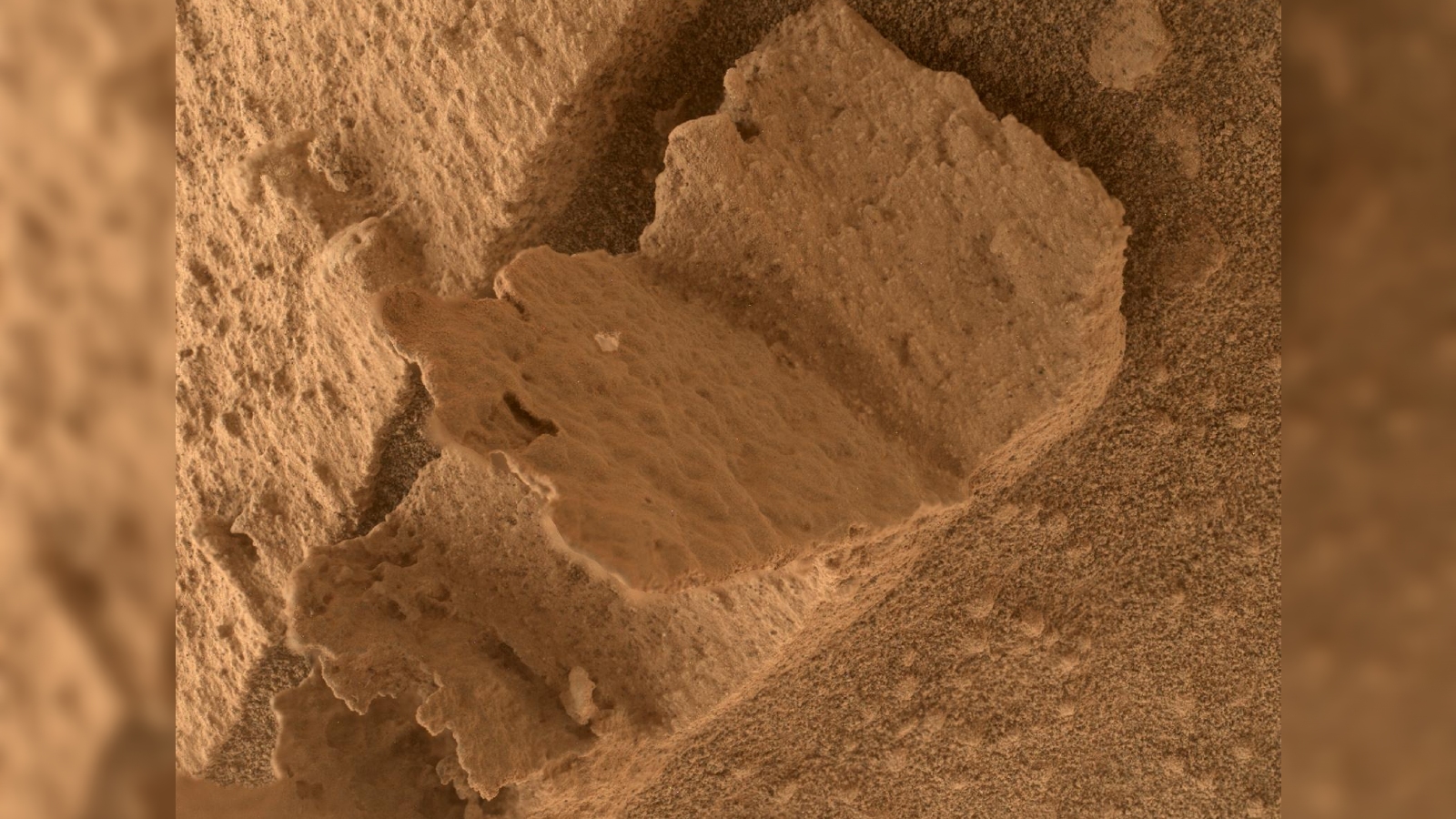Bizarre Martian 'book' spotted by NASA's Curiosity rover
The rover spotted a tiny Martian rock that looks eerily like a fossilized book on the surface of the Red Planet.

NASA's Curiosity rover snapped an intriguing picture of a tiny Martian rock that looks surprisingly like a fossilized book on the surface of the Red Planet.
The rover captured the image of the peculiar book-like rock on April 15 — the 3,800th Martian day, or sol, of its mission — using the Mars Hand Lens Imager (MAHLI) on the end of its robotic arm, according to NASA. The red rock looks like two halves of an open book with a single page that has frozen halfway through being turned.
The rock may look somewhat like a book, but it is much smaller. The fossilized pageturner is actually just 1 inch (2.5 centimeters) across, according to NASA.
Related: NASA's Perseverance rover loses its hitchhiking 'pet rock' after more than a year together on Mars
"Rocks with unusual shapes are common on Mars," NASA representatives wrote. The strangely shaped rocks are made from minerals that were left behind by ancient water. These minerals would once have been buried beneath softer sediments, but billions of years of erosion by wind have blown away everything else, they added.
In February 2022, Curiosity spotted a branched "mineral flower" that was around 0.4 inch (1 cm) wide. And on Feb. 16, the rover photographed rocks imprinted with tiny ripples, or waves, left behind from an ancient lake.
Scientists have also seen larger-scale shapes carved out by ancient water on the Red Planet — including a large rock formation that looks just like a teddy bear's face and another that's a dead ringer for the frizzy-haired Muppet Beaker.
Sign up for the Live Science daily newsletter now
Get the world’s most fascinating discoveries delivered straight to your inbox.
Curiosity has also caught a few images that are more stunning than perplexing. On Feb. 2, the rover captured the first clear images of "sun rays" on Mars, which occur when sunlight shines through gaps in the clouds during sunsets or sunrises when the sun is below the horizon.

Harry is a U.K.-based senior staff writer at Live Science. He studied marine biology at the University of Exeter before training to become a journalist. He covers a wide range of topics including space exploration, planetary science, space weather, climate change, animal behavior and paleontology. His recent work on the solar maximum won "best space submission" at the 2024 Aerospace Media Awards and was shortlisted in the "top scoop" category at the NCTJ Awards for Excellence in 2023. He also writes Live Science's weekly Earth from space series.










